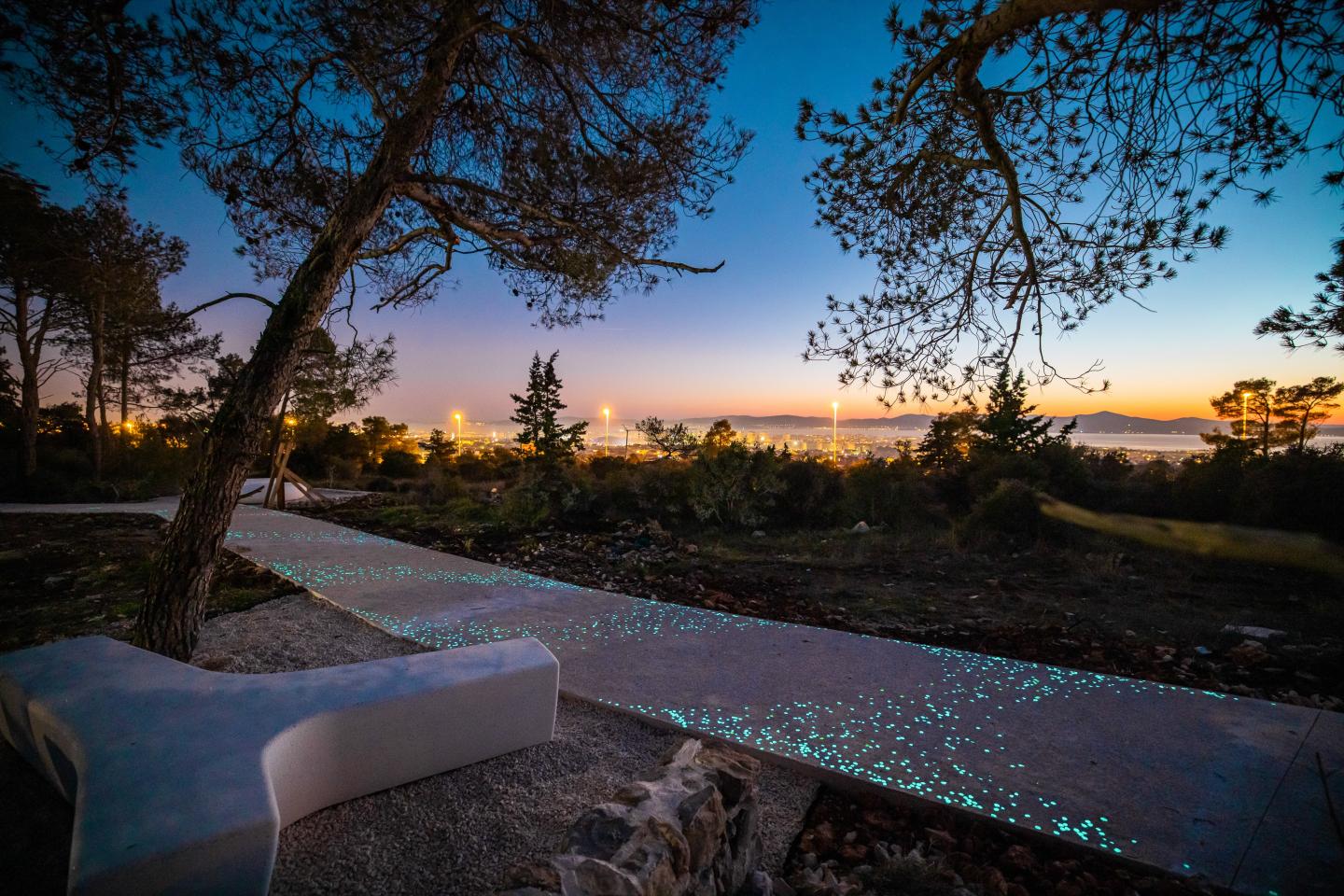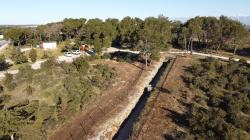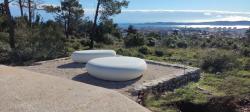The City of Zadar aims to reintegrate neglected public space, within the framework of the EU project "REVIVAL" (Revitalisation and Reuse of the lost heritage in the Adriatic landscape) through the rehabilitation and adaptation of a former military fortification into an accessible public space with landscaping, located on a site with a panoramic views of the city, the Zadar archipelago to the south, and Velebit mountains to the north.
Easily accessible to tourist, the location on the fringes of the city provides a new & unique reading of the urban & natural environment.
The initial goal of the project is to reintegrate the abandoned complex into the current context, and return it to a basic function by emphasizing and connecting key locations, with the outcome of reintegration and revitalization of the locality into the local events & public fabric in general.
The project primarily envisages the rehabilitation of the existing military facility, "Bunker C47", maintained in its authentic state, along with the arrangement of the access and the surrounding terrain, which would serve for touristic, educational, cultural and similar purposes as a space for gathering, exhibitions, multimedia presentations and tours.
The project includes a tourist segment that is little used in HR, "military tourism". Bunker C47 forms the starting point (stage 1) for one of approximately 250 forts of various typologies that form a chain on the former Italian border (today's border of the city of Zadar) from the settlement of Diklo to Bokanjac, Crno, Ploče and the port of Gaženica.
2021
2021
In addition to the restoration of the Bunker, landscaping is a key component of the concept, - which includes the creation of a walking path (stage 1), parking, a terraced, plateau, and a proposal to revitalize a former lookout tower as a separate attraction.
The path, - conceived as 'Linear Lookout', meanders among the pines. It is located in a position with a unique view of the city, a previously neglected, inaccessible area has recently been used as an illegal waste disposal.
In the long-term vision in the urban context, the analysis of the space includes the continuity of spatial, historical and political topics (eg from the Rapala treaties to the Homeland War), i.e. a proposal for a solution for a wider coverage of the zone.
In recent years, in accordance with the examples in the EU and the Republic of Croatia, initiatives have been taken to convert extensive military infrastructures for tourism purposes, especially where they are related to environmental protection and preservation of heritage.
The decorative/wasked concrete path provided numerous advantages, not only in terms of durability, self-sufficiency and accessibility for the disabled, but also as a base for the key detail of the path - fluorescent pebbles.
With this, intense lighting and light pollution were avoided. The illuminated path at night does not compete with city sights and provides enough light that accumulates during the day to guide visitors at night.
The urban equipment, including the path, are of concrete constructed, & particularly resistant to vandalism, as visits with night viewing of the city are anticipated.
.
Ante Androvic (design architect), Kristijan Vojnic, Mirela Levanat, Damir Mandra.











